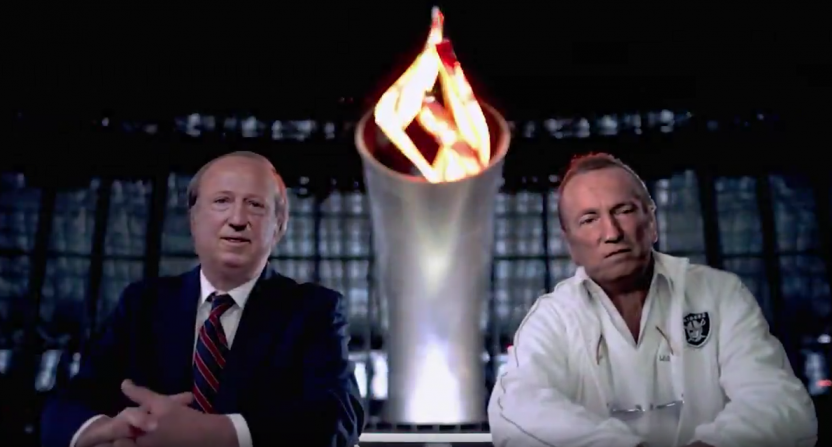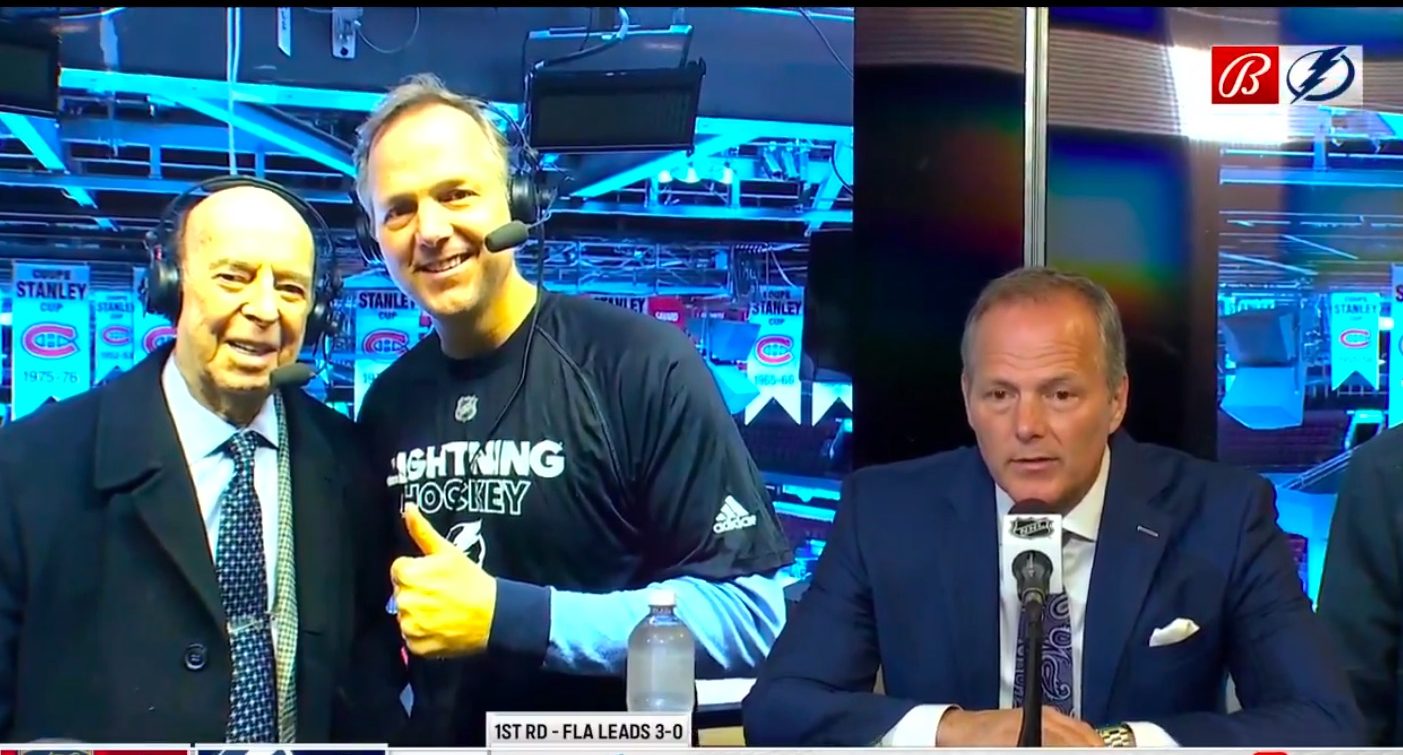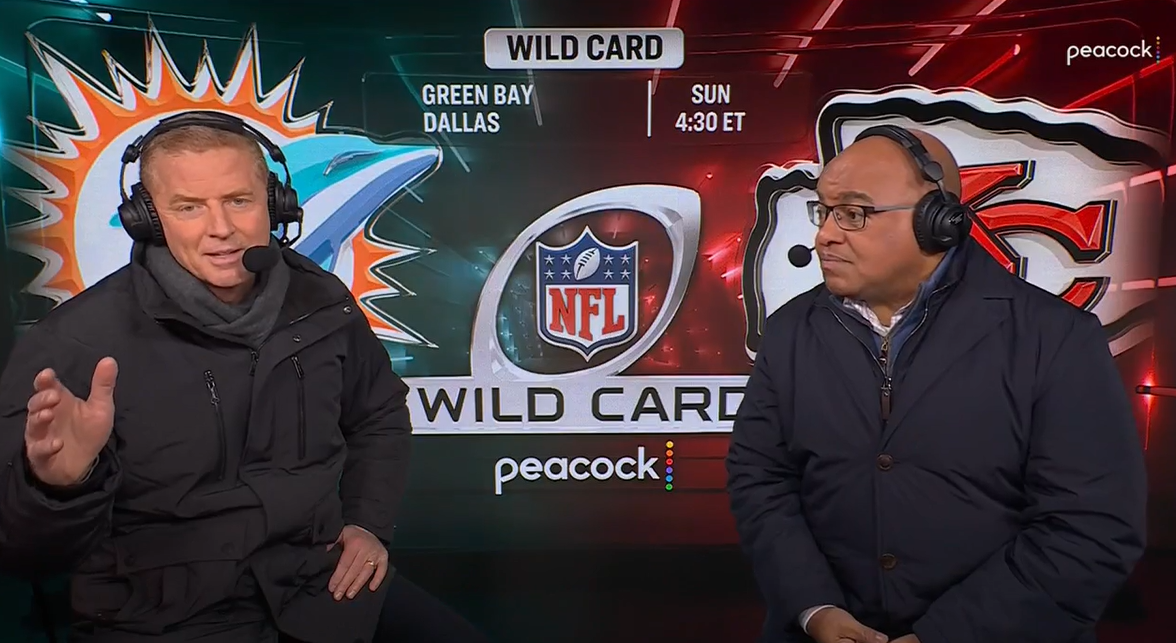In ESPN’s latest 30 for 30 documentary, filmmaker Ken Rodgers utilized deep fake technology to create holograms of Raiders founder Al Davis and longtime NFL commissioner Pete Rozelle. The practice was done as part innovation and part necessity as the COVID-19 pandemic restricted the ability to do a more traditional style documentary.
At times, the Al Davis vs. The NFL @30for30 is gonna look … different 🧐
(📍@Hyundai) pic.twitter.com/HZovfD6sAC
— ESPN (@espn) February 4, 2021
Amid the circumstances of producing a documentary during a pandemic, it was worth the effort to experiment but viewers may not have been ready for seeing virtual versions of Davis and Rozelle mixed in with archival footage.
First impressions of the deep fake technology seemed to have one commonality. The vast majority of the early reactions used the word “creepy” or a variation of that. There was the occasional compliment but searching #30For30 yielded bad reviews for the deep fakes, despite an enthusiasm for the story being told.
This 30 for 30 is already creepy #30For30
— Alex Gonzalez (@OutHereWriting) February 5, 2021
https://twitter.com/msavacool92/status/1357510614646685703?s=20
I don't know about the deep fakes used for the #AlDavisVsTheNFL #30for30
— Kevin David Martinez (@damitslyric) February 5, 2021
This ESPN 30 for 30 is creepy. They are using deepfake technology to recreate Al Davis and Pete Rozelle. You can tell it's digitized, but still creepy. #ESPN #30For30
— Mike Keleher (@Hexfoliation) February 5, 2021
Okay. This technology is cool and CREEPY AF at the same thing #30For30
— Checkbook Baseball (@SirDreDeux) February 5, 2021
already creepy #30For30
— Zac Wassink (@ZacWassink) February 5, 2021
This AL Davis #30for30 is already crazy. CGI AL and Rozelle
— Dru 🇺🇸 (@LAKingsDru) February 5, 2021
Anyone else completely weirded out by this #30For30 and their insistence on having people tell it from Davis and Rozelles perspective???
The makeup is just too much
— Mitch (@mburg930) February 5, 2021
I'm sorry, they created Al Davis and Pete Rozelle deep fakes for this #30For30?
— Kevin D. Grüssing (@ Momocon May 26th-30th) (@KevDGrussing) February 5, 2021
Nahhhh… this is creepy creepy, who thought this was a good way to film this?#30For30
— Jessica Abram 🦂 (@coffeed_scorpio) February 5, 2021
Not a fan of these “deep fakes” in the Al Davis #30For30 so far. Could have easily told the story without it. Just creepy..
— 🦌 (@RyanJawn) February 5, 2021
https://twitter.com/_frankiefjr_/status/1357510916850339840?s=20
I’m not really feeling the fake Al Davis and Pete Rozelle 😬 #30For30
— Antwan V. Staley (@antwanstaley) February 5, 2021
#30For30 this cgi is absolutely terrible
— Jay (@JBusch60) February 5, 2021
Okay this computer generated Al Davis is kind of freaking me out #30For30
— Steven Lewis (@slew8) February 5, 2021
This #30For30 with deep fakes is trash. Wtf. A great topic that doesn't need this shit.
— $park Guy (@SparkyATS) February 5, 2021
https://twitter.com/Nitsche33/status/1357511171411238913?s=20
This #30for30 is cool and all but it shows you how easily a video can be faked.
— G II (@MisterNickel) February 5, 2021
This hologram is ummm weird. #AlDavis #30for30
— Keith Cordero Jr. (@kmcorder) February 5, 2021
Kinda weirded out by this #30for30
— John E. Hoover 🌮 (@johnehoover) February 5, 2021
These weird deep fake Al Davis and Pete Rozelle #30for30 with impersonators or whatever doing the voices is really strange and distracting. #NFL
— Wilson Wilding (@WilsonWildingWF) February 5, 2021
Was really looking forward to this one but uhhh this could have been done like a normal 30for30 #30For30
— Jessica Abram 🦂 (@coffeed_scorpio) February 5, 2021
The reaction has mostly been a bit critical of the decision to use the deep fakes, but again ESPN was somewhat backed into a corner here with the pandemic. The most obvious thing I noticed was it was very jarring to hear the actor speaking as Davis or Rozelle, immediately go to archival footage with Davis’ or Rozelle’s actual voice, and then go back to deep fake Davis or Rozelle. It’s tough to suspend your disbelief when you immediately hear similar but different accents.
Even so, it was a noble attempt to experiment with deep fake technology and may be something we’ll get more used to in the future.





